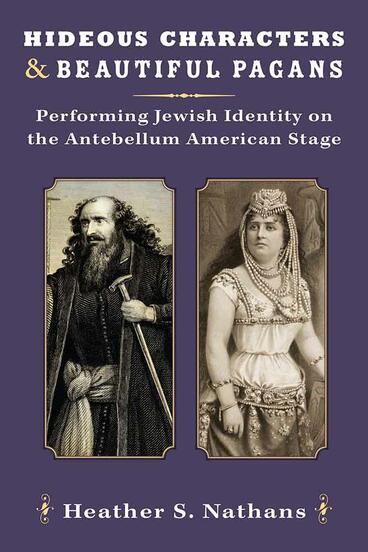Hideous Characters and Beautiful Pagans
Performing Jewish Identity on the Antebellum American Stage
Shows how the earliest representations of Jewish characters on American stages mirrored treatment of Jewish Americans outside the playhouse
Description
While battling negative stereotypes, American Jews carved out new roles for themselves within the first theatrical entertainments in America. Jewish citizens were active as performers, playwrights, critics, managers, and theatrical shareholders, and often tied their involvement in these endeavors to the patriotic rhetoric of the young republic as they struggled to establish themselves in the new nation. Examining play texts, theatrical reviews, political discourse, and public performances of Jewish rights and rituals, Hideous Characters and Beautiful Pagans argues that Jewish stage types shed light on our understanding of the status of Jewish Americans during a critical historical period.
Using an eclectic range of sources including theatrical reviews, diaries, letters, cartoons, portraiture, tax records, rumors flying around the tavern, and more, Heather S. Nathans has listened for the echoes of vanished audiences who witnessed and responded to these stereotypes onstage, from the earliest appearance of Shylock on an American stage in 1752 to Jewish theater artists on the eve of the Civil War. The book integrates social, political, and cultural histories, with an examination of those texts (both dramatic and literary) that shaped the stage Jew.
Heather S. Nathans is Professor in the Department of Drama and Dance at Tufts University.
Reviews
“A seminal study that will influence our continuing efforts to understand the 19th century American theatre. Nathans has pulled together various strands of Jewish history—religious, secular, theatrical—to weave a convincing pattern about the way Jewish plays and characters changed as the culture changed. This book has set a high bar for research in 19th century American theatre.”
— Tice Miller, University of Nebraska
"...A masterpiece of scholarship. Beautifully written, well structured, and exquisitely researched, Nathans’s book deepens our understanding of this tumultuous, but often under-studied, era. Her attention both to theories of the theater and masculinity should make her volume compelling and useful to scholars working in later eras...Hideous Characters and Beautiful Pagans is a remarkable work of scholarship from a senior scholar with deep knowledge of both theater history and early America...this is a phenomenal book that is both smart and a pleasure to read. Nathans provides a new standard for integrating literary and historical approaches. As Josh Lambert notes, some of most interesting recent works of literary criticism pay attention to the materiality of Jewish American literature 'by analyzing its production and consumption in fine detail.' Nathans follows this trend, but brings to the conversation an eye for how theater performances mattered to everyday life and Jewish history."
— The American Jewish Journal Archives
Winner: American Theatre and Drama Society (ATDS) 2018 John W. Frick Award
- ATDS John W. Frick Book Award
Winner: American Society for Theatre Research (ASTR) 2018 Barnard Hewitt Award
- ASTR Barnard Hewitt Award

